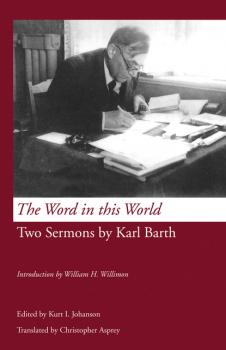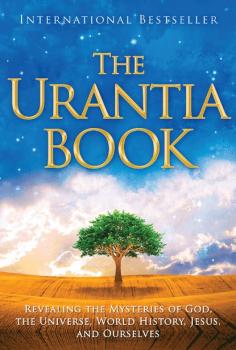ТОП просматриваемых книг сайта:
Религия: прочее
Различные книги в жанре Религия: прочее, доступные для чтения и скачиванияАннотация
The conviction that Jesus is the restorative Christ demands a commitment to the justice he articulated. The justice of the restorative Christ is justice with reconciliation, justice with repentance, justice with repair, and justice without retaliation. The Gospel of Luke and the book of Acts portray the life, death, and resurrection of Jesus Christ through the radical concept of «enemy-love.» In conversation with Dietrich Bonhoeffer (Jesus-for-others), John Howard Yoder (a nonviolent Jesus), Miroslav Volf (an embracing Jesus), and Chris Marshall (a compassionate Jesus), Broughton demonstrates what the restorative Christ means for us today. Following the restorative Christ faithfully involves imaginative disciplines (seeing, remembering, and desiring), conversational disciplines (naming, questioning, and forgiving), and embodied disciplines (absorbing, repairing, and embracing).
Аннотация
"The author of Hebrews is arguing that God himself has brought about the fulfillment of these institutions through his Son's priesthood, his once-for-all sacrifice, and the new covenant he inaugurated in the last days. These new institutions are never denied the Jews. In fact, the context of the epistle presumes that these are primarily for the Jews, considering that the author was speaking to a Jewish-Christian community. The author is not arguing for the abandonment by God of the Jewish people, but rather for the abandonment of the shadowy means by which God's people drew near to him. It is here we can speak of a qualified supersessionism. According to the author of Hebrews, the Levitical priesthood, the Mosaic covenant, and the Levitical sacrifices have been superseded by Jesus' priesthood, the new covenant, and Jesus' once-for-all sacrifice. "However, we conclude that the polemical passages in Hebrews do not promote hatred of the Jews, nor do they advocate the destruction of the Jewish people. Rather, the author of Hebrews stresses the fulfillment of specific Jewish institutions for the benefit of the Jews. It is this idea of fulfillment that rules out the charge that the epistle promotes the supercession of the Jewish people. Because of God's great love for his people, he has provided a superior way by which his people can draw near to him." –from the Conclusion
Аннотация
You have just discovered the literary masterpiece that answers your questions about God, life in the inhabited universe, the history and future of this world, and the life of Jesus.  The Urantia Book harmonizes history, science, and religion into a philosophy of living that brings new meaning and hope into your life. If you are searching for answers, read The Urantia Book!The world needs new spiritual truth that provides modern men and women with an intellectual pathway into a personal relationship with God. Building on the world's religious heritage, The Urantia Book describes an endless destiny for humankind, teaching that living faith is the key to personal spiritual progress and eternal survival.  These teachings provide new truths powerful enough to uplift and advance human thinking and believing for the next 1000 years.A third of The Urantia Book is the inspiring story of Jesus’ entire life and a revelation of his original teachings. This panoramic narrative includes his birth, childhood, teenage years, adult travels and adventures, public ministry, crucifixion, and 19 resurrection appearances.  This inspiring story recasts Jesus from the leading figure of Christianity into the guide for seekers of all faiths and all walks of life.
Аннотация
2017 Wilbur Non-Fiction Award Recipient Winner of the 2018 Author's Award in scholarly non0fiction, presented by the New Jersey Studies Academic Alliance [/b][b]In Black Women’s Christian Activism, Betty Livingston Adams examines the oft overlooked role of non-elite black women in the growth of northern suburbs and American Protestantism in the first half of the twentieth century. When a domestic servant named Violet Johnson moved to the affluent white suburb of Summit, New Jersey in 1897, she became one of just barely a hundred black residents in the town of six thousand. In this avowedly liberal Protestant community, the very definition of “the suburbs” depended on observance of unmarked and fluctuating race and class barriers. But Johnson did not intend to accept the status quo. Establishing a Baptist church a year later, a seemingly moderate act that would have implications far beyond weekly worship, Johnson challenged assumptions of gender and race, advocating for a politics of civic righteousness that would grant African Americans an equal place in a Christian nation. Johnson’s story is powerful, but she was just one among the many working-class activists integral to the budding days of the civil rights movement. Focusing on the strategies and organizational models church women employed in the fight for social justice, Adams tracks the intersections of politics and religion, race and gender, and place and space in a New York City suburb, a local example that offers new insights on northern racial oppression and civil rights protest. As this book makes clear, religion made a key difference in the lives and activism of ordinary black women who lived, worked, and worshiped on the margin during this tumultuous time.
Аннотация
Are there places in your life you need to come back from? Maybe it’s around<br> family brokenness or a friend’s betrayal. It could be classmate drama or a<br> family divorce. Perhaps money problems or health issues have caused a<br> loss. Whatever the case, it feels like life has been against you. Come Back:<br> Returning to the Life You Were Made For offers five elements that are crucial<br> to renewal. Each element is paired with an ancient practice that has helped<br> people for thousands of years in countless cultures navigate the tricky<br> waters of transformation. These five practices are designed for everyday<br> people. It’s not too late and you’re not too far gone. You were made for<br> a turnaround. You don’t need a spiritual pedigree to start the journey.<br> Here’s what you do need: A heart-felt desire to see your life change and an<br> openness to the process. That’s it. The rest will be revealed along the way.
Аннотация
“Does the preacher now impress us as a ‘legate of the skies’? To many he is a pathetic figure, an anachronism, a stage-joke—an inoffensive little person jostled by the crowd, and wearing the expression of a startled rabbit. With one hand he holds a circular hat on a bewildered head and with the other desperately clutches an umbrella. The crowd pushes him from the sidewalk; the traffic shoots him back into the crowd. Some curse him; a few laugh; most are unaware of his existence.” (George Buttrick, Lyman Beecher Lectures, 1931). Whether we need preaching has been asked for hundreds of years, long before an age of media saturation from streaming 24-hour news, entertainment, politics, and sports. This question hounded George Buttrick, one of the most profound preachers of the twentieth century and often compared with Billy Graham. Buttrick offers a compelling answer to the question, but his answer remained hidden for 40 years until now. In George Buttrick’s Guide to Preaching the Gospel , we learn why the world needs competent preachers, what the preacher must preach about, and how the preacher goes about creating the sermon with daily discipline and several practiced skills, including research, charting, outlining, writing, and performance. These writings have never been published before and were found by his grandchildren after his death. A brief biography of Buttrick introduces this master orator and professor to reader who do not know his work.










